Choosing the right vehicle for rural life is a decision that goes far beyond style, speed, or even fuel efficiency. For those living outside the boundaries of city limits—whether on farms, ranches, small towns, or remote communities—the demands placed on vehicles are uniquely challenging.
Roads may be unpaved and unforgiving, weather can be extreme and unpredictable, and the distance to the nearest repair shop or fuel station can be vast. In these conditions, a vehicle must be more than just reliable; it must be rugged, practical, and capable of enduring the rough and varied terrain without breaking down or leaving its driver stranded.
Rural America’s landscape varies dramatically—from rocky mountain trails to dusty dirt roads, muddy back lanes, and snow-covered rural highways. Unlike the controlled environment of a city street, these roads test the durability and design of every vehicle that tries to traverse them.
A well-suited rural vehicle needs high ground clearance, tough suspension, robust drivetrain components, and the ability to carry heavy loads or tow trailers. Equally important is the ease of maintenance and access to parts, which can be the difference between being stuck for days or quickly back on the move.
These factors shape the everyday experience of millions of rural drivers whose livelihoods and lifestyles depend on their vehicle’s performance.
Despite these demands, many vehicles marketed as versatile or capable simply do not hold up well beyond city limits. Luxury SUVs, low-profile electric cars, and sporty hatchbacks often look attractive and offer great features in urban settings but reveal their limitations once faced with uneven terrain, poor road surfaces, or a lack of nearby infrastructure.
On the other hand, certain trucks and SUVs have earned their reputations by consistently delivering strength, comfort, and reliability where it matters most—in the fields, forests, and rural highways of America. These are vehicles that owners trust not just for occasional weekend adventures, but for the daily grind of rural life.
This article aims to provide a clear, practical guide for anyone seeking a vehicle that truly performs off-road. We’ll explore five vehicles renowned for their toughness, versatility, and dependability in rural settings—vehicles that owners count on year after year without costly breakdowns or excessive repairs.
We’ll also examine five vehicles that, while popular in urban or suburban contexts, fall short when taken off the beaten path. These distinctions are important because the wrong vehicle choice in rural America can lead to frustration, expensive repairs, or even safety risks.
Whether you’re a farmer, a rancher, a tradesperson, or simply someone who enjoys life beyond the city, understanding which vehicles rise to the occasion—and which don’t—is essential. Reliable transportation is more than convenience in rural areas; it’s a lifeline.
By highlighting the strengths and weaknesses of these vehicles, we hope to help you make an informed decision that fits the realities of rural life, ensuring that your vehicle isn’t just a mode of transport but a dependable partner through whatever terrain or weather comes your way.
Also Read: 5 Cars Where Minor Repairs Total Over $1,000 And 5 That Stay Manageable
5 Vehicles You Can Depend On in Rural America
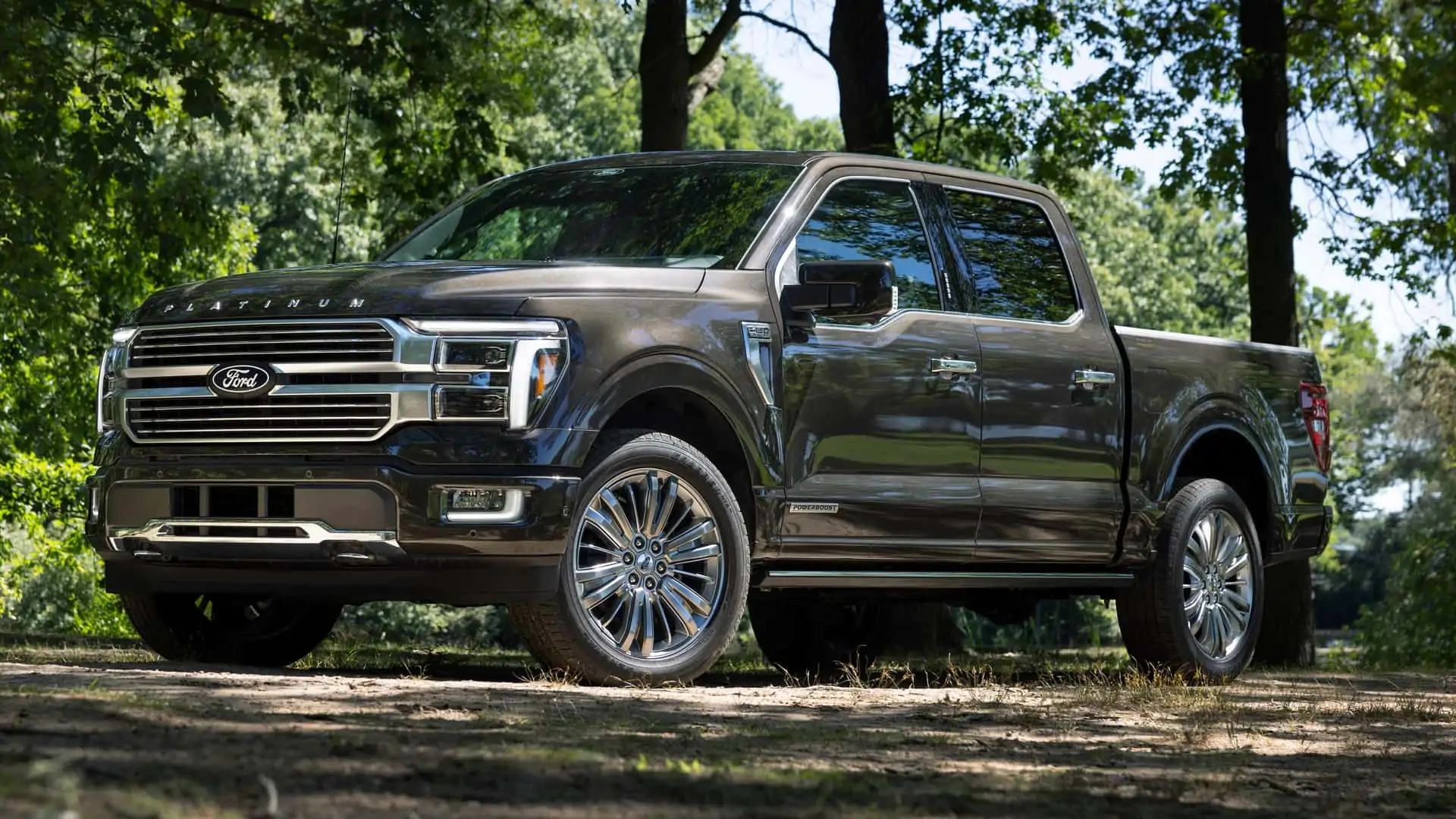
1. Ford F-150
The Ford F-150 has earned its place in the heart of rural America not through marketing campaigns or clever slogans, but through years of consistent performance in real-world conditions.
This truck is more than a symbol of American engineering — it’s a cornerstone of rural life. Whether you’re on a cattle ranch in Montana or hauling lumber in Arkansas, the F-150 adapts to the job with confidence.
It comes in a range of trims and configurations, from basic work trucks to high-end models with advanced technology, but the foundation remains the same: a tough, body-on-frame vehicle with strong towing and payload capabilities. It’s designed for durability, and in the country, that’s not optional — it’s essential.
Rural driving isn’t just about going off-road — it’s about handling a little bit of everything: dirt, gravel, snow, rain-slicked pavement, muddy fields, and long stretches of highway. The F-150’s high ground clearance, solid axle setup, and available four-wheel-drive systems make it more than capable of dealing with unpredictable terrain.
Even base models come with a suspension tuned for absorbing rough roads and resisting premature wear. Higher trims with off-road packages like FX4 or Tremor add locking differentials, skid plates, and specially tuned shocks for even more backcountry resilience. And despite its size, the F-150 has a surprisingly compliant ride, making it comfortable enough for daily use and long trips into town.
Perhaps most importantly, the F-150 enjoys a support network like no other truck. In rural areas where dealerships and certified mechanics may be few and far between, this matters.
The F-150 is one of the easiest vehicles in America to service, with parts available at nearly every auto shop and gas station. From maintenance to emergency repairs, owning an F-150 in rural America means never being stranded for long. It’s a vehicle that doesn’t just get the job done — it keeps doing it, year after year, in places where failure isn’t an option.
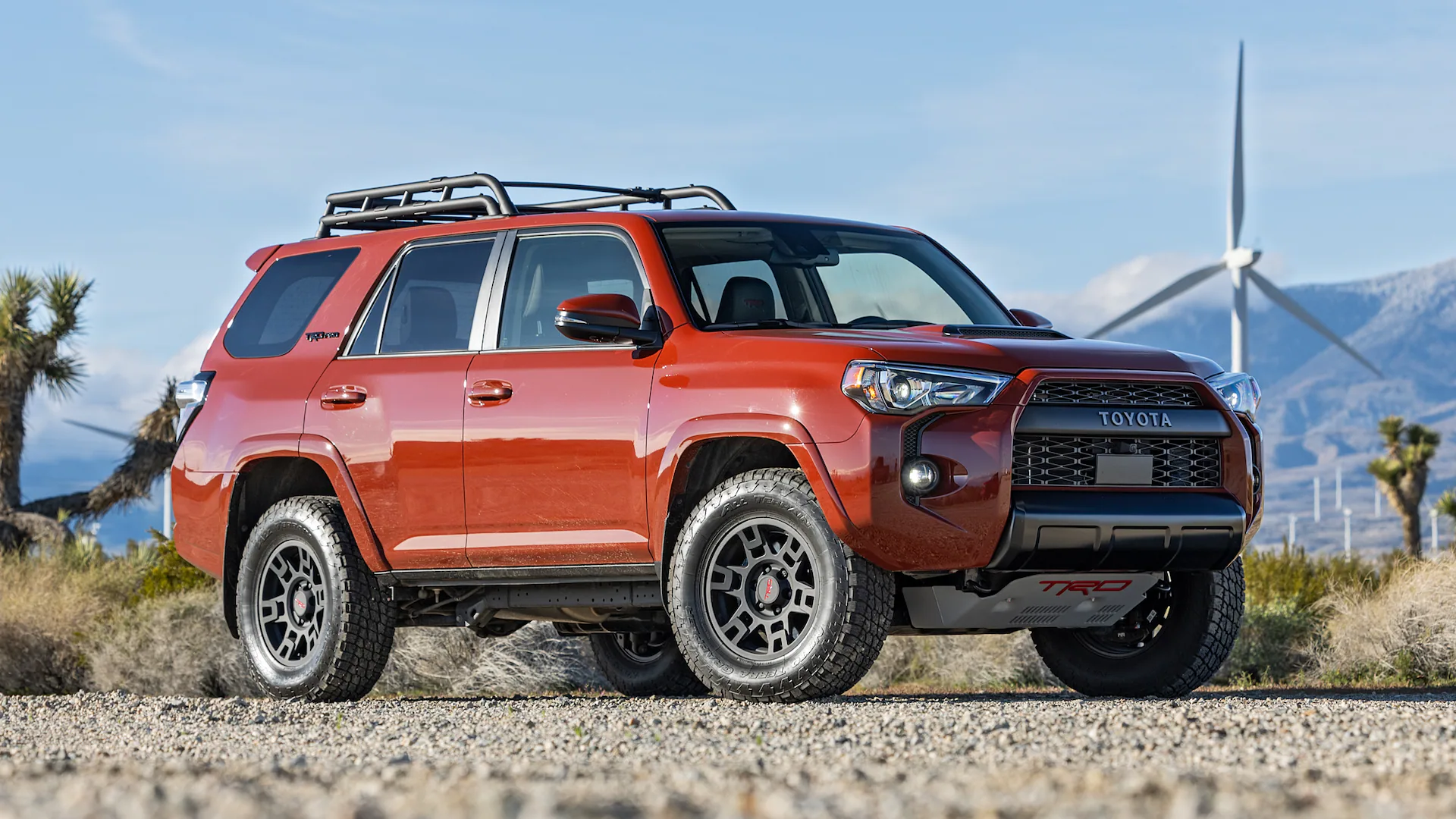
2. Toyota 4Runner
If there’s a single SUV that’s been quietly conquering rural roads for generations, it’s the Toyota 4Runner. Unlike many modern SUVs that have traded toughness for tech, the 4Runner has stayed true to its roots as a body-on-frame utility vehicle.
This makes it uniquely qualified to endure the specific punishment that rural America deals out — unpaved roads, steep inclines, river crossings, snowdrifts, and unpredictable trail surfaces. It’s not designed for style or street corner appeal.
It’s designed to work, to last, and to get you home when the weather turns or the road washes out. And it does all that while maintaining Toyota’s reputation for longevity and mechanical simplicity.
Mechanically, the 4Runner is about reliability over complexity. Its naturally aspirated 4.0-liter V6 may not win drag races, but it’s nearly bulletproof — known to run well past 300,000 miles with only routine maintenance.
The available part-time 4WD system, locking rear differential, and Multi-Terrain Select make it ideal for steep driveways, logging roads, or remote work sites where grip and control are vital.
Its suspension is built for durability, not softness, and while it may not float over bumps like a luxury SUV, it won’t cry uncle halfway up a gravel ridge either. Skid plates and a high stance give it underbody protection and clearance that keep important components safe from damage.
Where the 4Runner earns its stripes, though, is in how little it asks of its owner. It doesn’t overwhelm you with complicated electronics, nor does it require frequent visits to the dealer. It’s a vehicle built for people who don’t want their car to be the center of attention — they just want it to work.
It’s no wonder the 4Runner is a favorite among park rangers, off-grid dwellers, and rural families who need a dependable vehicle for every season and every kind of road. While competitors chase crossover trends, the 4Runner just keeps showing up and getting it done.

3. Ram 2500
If you live in rural America and you work with your vehicle as much as you drive it, the Ram 2500 is a name that comes up early and often. This isn’t your average pickup — it’s a heavy-duty workhorse that’s built for real labor.
Whether you’re towing trailers loaded with livestock, hauling thousands of pounds of equipment to job sites, or navigating snowy, washboard roads that would shake lesser trucks apart, the Ram 2500 brings confidence with every mile.
Its available 6.4L HEMI V8 and 6.7L Cummins diesel engines are built for strength and longevity, giving rural owners serious pulling power and efficiency across long distances.
What sets the Ram 2500 apart in the field is its ability to balance brute strength with surprising refinement. The optional air suspension provides a smoother ride than most trucks in its class, especially when loaded — a game-changer on long rural drives over uneven terrain. Even the solid rear axle, known for durability, is tuned to take hits without transmitting bone-shaking impact to the cabin.
And while this truck is a beast on the job, it’s also comfortable enough inside to make those long drives between towns less exhausting. With roomy interiors, good visibility, and intuitive controls, it’s a truck that feels well thought-out for hard-working drivers.
From an ownership perspective, the Ram 2500 excels where it counts: serviceability, durability, and toughness under stress. Rural truck owners often rack up high mileage fast, and the Ram’s drivetrain components are engineered to take that kind of punishment without early failure.
Diesel options, in particular, are famous for running into the hundreds of thousands of miles with proper care. When you consider everything — the power, the comfort, the sheer physical capability — the Ram 2500 is more than just a truck. It’s a dependable workmate for people who don’t have the luxury of vehicles that break down easily.

4. Subaru Outback
The Subaru Outback may look like a mild-mannered wagon, but rural residents know better — it’s one of the most dependable and versatile vehicles for off-city living. Its secret weapon is Subaru’s symmetrical all-wheel-drive system, which gives it incredible balance and traction, especially on muddy trails, icy roads, and gravel back lanes.
The Outback has been a favorite in mountain towns, snowbelt regions, and farming communities for years because it offers true all-weather performance without the fuel costs or size of a full SUV or truck.
Beyond traction, the Outback is built with real-world rural driving in mind. It features nearly 9 inches of ground clearance, enough to clear deep snow and avoid getting hung up on mid-trail obstacles. Its long suspension travel and refined damping mean it can handle washboard gravel and potholes with surprising composure.
The cabin remains quiet and intact, even on rough roads that would shake a lesser car apart. Plus, Subaru’s emphasis on safety translates into a vehicle that feels secure, even when conditions aren’t — a critical factor for families living far from emergency services or well-maintained highways.
What seals the deal for many rural drivers is the Outback’s practical design. With its low step-in height and massive cargo capacity, it’s perfect for everything from hauling feed bags to transporting dogs and camping gear. The roof rails come with integrated crossbars, and the rear seats fold flat with ease, turning the car into a small-scale hauler when needed.
Subaru’s focus on simplicity and function over flash means fewer things break, and maintenance is refreshingly straightforward. For rural commuters, backwoods adventurers, and anyone who needs a go-anywhere vehicle with daily comfort, the Outback consistently punches above its weight.
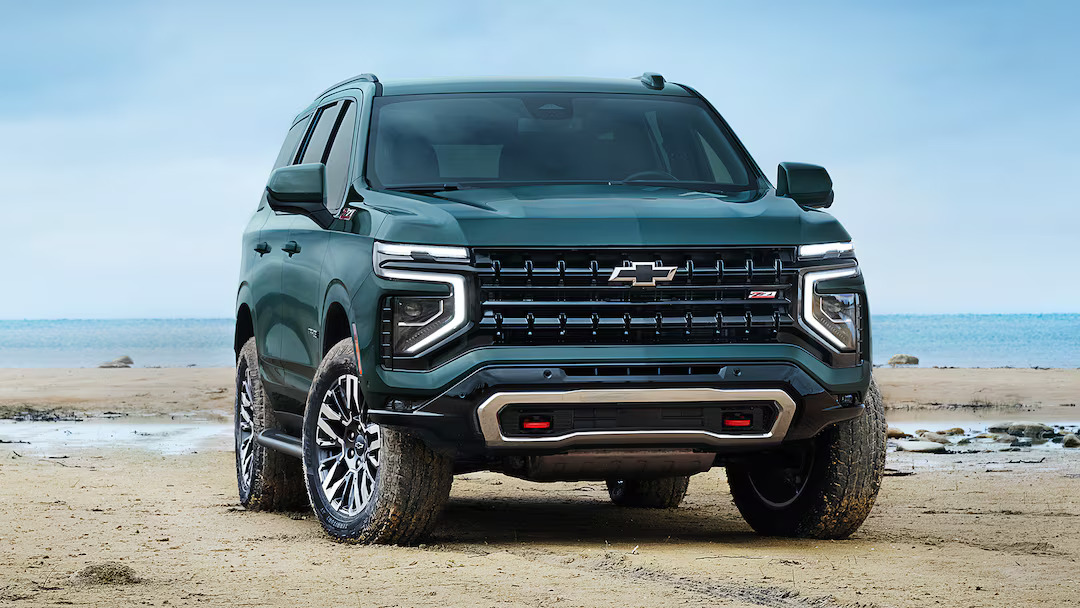
5. Chevrolet Tahoe
In places where the nearest town may be 40 miles away and the school bus only comes halfway down the road, families in rural America need a vehicle that can do everything, and the Chevrolet Tahoe has been answering that call for decades. Built on a truck-based platform, the Tahoe combines the ruggedness of a full-size pickup with the passenger space and comfort of a large SUV.
It’s big, powerful, and capable of taking a beating from backroads, dirt trails, and winter storms without missing a step. Whether you’re towing a camper or hauling a week’s worth of supplies, it never feels overwhelming.
Under the hood, the Tahoe’s V8 powerplants provide all the torque and grunt you could ask for, whether you’re towing a horse trailer or just trying to muscle through a muddy lane after a rainstorm.
The available 4WD system and off-road package turn it into a beast in the snow or dirt, while newer models benefit from optional Magnetic Ride Control — an adaptive suspension that smooths out the ride even over rough ground. This gives rural drivers something rare: a vehicle that doesn’t just survive in tough terrain — it does so while keeping everyone inside comfortable and secure.
Interior space is another huge asset. With three rows of seating, plenty of cargo room, and robust climate control systems, the Tahoe makes sense for large families or anyone doing double duty between work and home life.
Its wide stance and commanding view of the road give drivers an added sense of control, and its truck-like durability means it won’t rattle apart after a few years on rough surfaces.
For rural dwellers who need strength, size, and reliability wrapped into one vehicle, the Chevrolet Tahoe remains one of the best all-around options available.
5 Vehicles That Are Useless Off-City
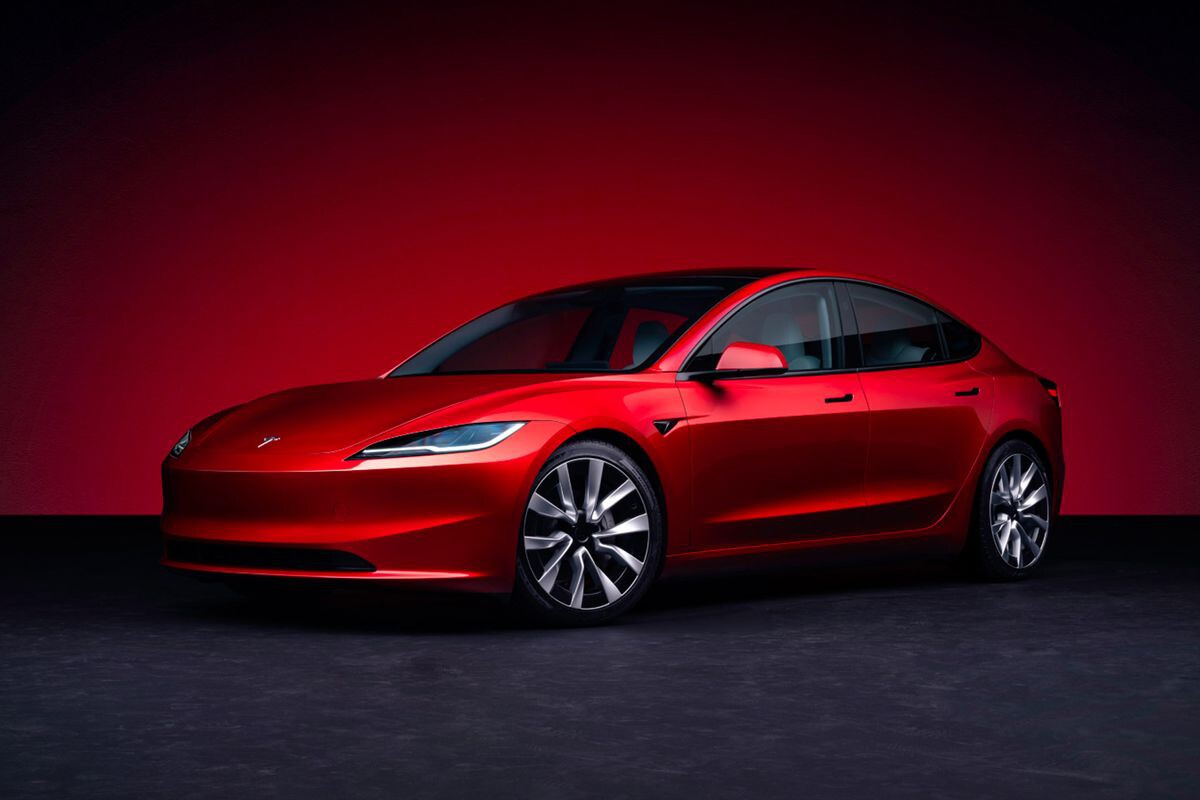
1. Tesla Model 3
The Tesla Model 3 is widely praised for its cutting-edge electric powertrain, rapid acceleration, and sleek design. However, in rural America, where paved roads often give way to gravel, dirt, or mud, the Model 3 shows significant limitations. Its low ground clearance — typically around 5.5 inches — makes it ill-equipped to navigate uneven surfaces, potholes, or rutted dirt roads without risking damage to the battery pack or underbody components.
Unlike traditional internal combustion vehicles that can absorb some impact, the Model 3’s flat undercarriage and exposed battery modules are vulnerable to scrapes or punctures on rough terrain.
Moreover, the Model 3’s suspension system is tuned for smooth urban streets and highways rather than the unpredictable off-pavement conditions typical of rural environments. The car’s relatively stiff ride, while beneficial for handling precision on asphalt, translates into a harsh, jarring experience on washboard gravel or rocky lanes.
Its tires and wheels — often large and low-profile for aesthetic and performance reasons — are prone to damage from sharp rocks or debris frequently encountered in the countryside. This makes daily rural driving a risky proposition and can quickly lead to costly repairs.
Perhaps the most critical limitation, though, is charging infrastructure. In many rural areas, Tesla’s Supercharger network is sparse or nonexistent, and home charging depends on a stable electrical supply, not always guaranteed in remote locations.
If you get stranded with a dead battery miles from town, the situation can become precarious quickly. In addition, the lack of a traditional internal combustion engine means no emergency fuel options, and towing or roadside assistance can be complicated or unavailable. For these reasons, while the Model 3 is a star in urban and suburban settings, it struggles to meet the practical needs of rural life.
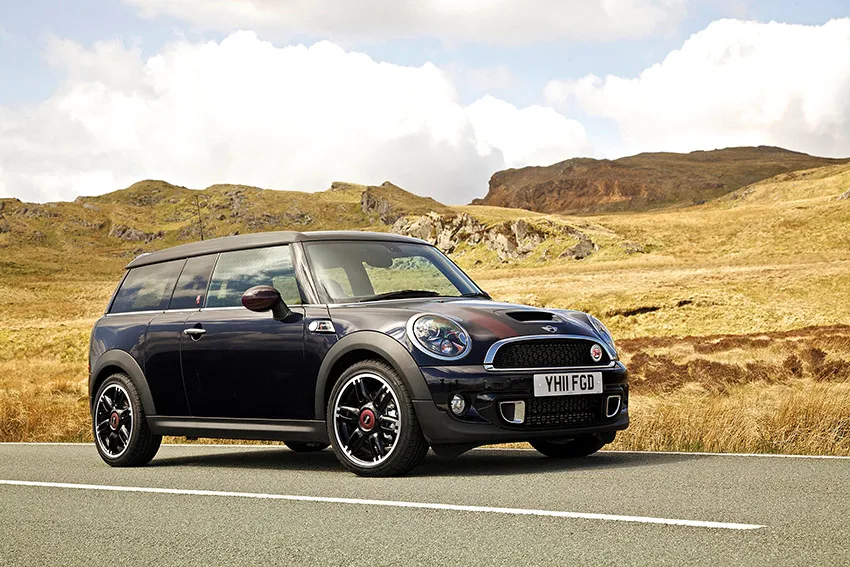
2. Mini Cooper
The Mini Cooper is a compact, nimble city car known for its sharp handling, retro styling, and efficient use of space. But as fun as it is on smooth city streets and tight parking spots, it’s a poor choice for off-city rural environments.
The Mini’s low ground clearance and small wheels make it extremely vulnerable to damage from gravel roads, potholes, and uneven surfaces that are common outside urban areas. Rural roads often demand a vehicle that can absorb rough terrain without constant worry of bent rims or torn tires — something the Mini simply wasn’t built for.
The suspension setup of the Mini prioritizes sporty, responsive handling over durability and comfort on rugged terrain. While that makes it a blast on tarmac, it translates to a harsh, uncomfortable ride on dirt or gravel, with the vehicle frequently rattling, bouncing, or scraping against rocks and debris.
The chassis, designed for precision rather than endurance, can feel brittle when pushed beyond the confines of city roads. Drivers who attempt to take a Mini off-road or on long rural drives often complain about rattling panels, loose trim, and premature wear on suspension components.
On a practical level, the Mini Cooper’s small interior and limited cargo capacity are also major drawbacks for rural drivers. There’s little space for hauling supplies, tools, or bulky gear — essentials for rural life. Its compact size might be an advantage in tight city streets, but it doesn’t translate to functionality in a rural setting where space and capability are paramount.
Moreover, servicing a Mini in rural areas can be a challenge, as specialized parts and mechanics may be scarce. Ultimately, the Mini Cooper’s urban-centric design and fragile nature make it a poor choice for anyone relying on their vehicle outside the city.
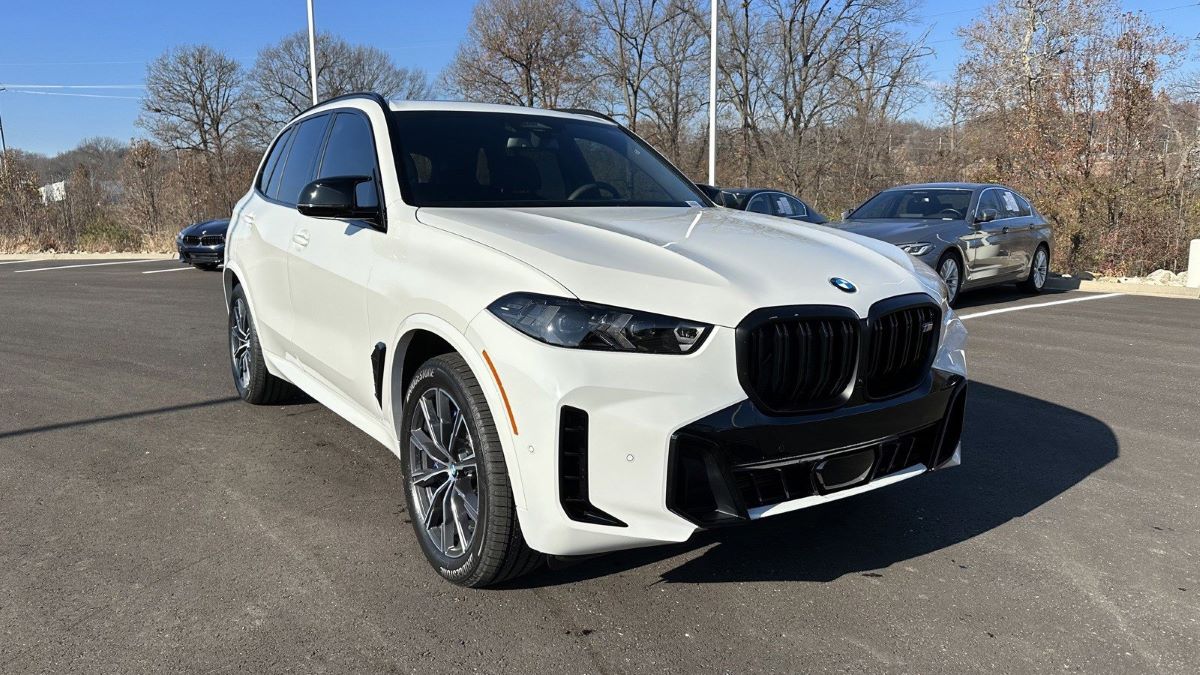
3. BMW X5
The BMW X5 is a luxury SUV that excels in urban and suburban environments with its refined ride, powerful engines, and high-tech amenities. However, when it comes to rural or off-road driving, the X5 often falls short in ways that become painfully apparent to drivers unprepared for harsh terrain.
Despite its all-wheel-drive system, the X5 is built more for on-road performance than rugged off-pavement use. Its sophisticated suspension and low-profile tires are prone to damage on rocky, uneven surfaces that are commonplace in rural areas.
Furthermore, the X5’s ground clearance — generally around 8 inches — may seem adequate on paper, but it’s paired with a delicate undercarriage filled with sensitive electronics, sensors, and plastic trim pieces that don’t hold up well when scraping against rocks or navigating deep ruts.
In rural conditions, this often leads to costly repairs and increased maintenance bills. The X5’s weight and complexity also mean it’s more likely to get stuck or struggle on muddy or snowy backroads compared to simpler, purpose-built vehicles.
Another significant factor is the X5’s reliance on technology-heavy systems that can be problematic off-grid. Its advanced driver-assist features often depend on consistent GPS and cellular connections, which may not be reliable in remote rural areas.
Additionally, the complexity of its systems increases the risk of mechanical failures, and specialized repairs can be expensive and hard to source far from urban centers. For these reasons, while the BMW X5 impresses on smooth pavement, it isn’t built to endure the unpredictable and often punishing conditions found off the beaten path.
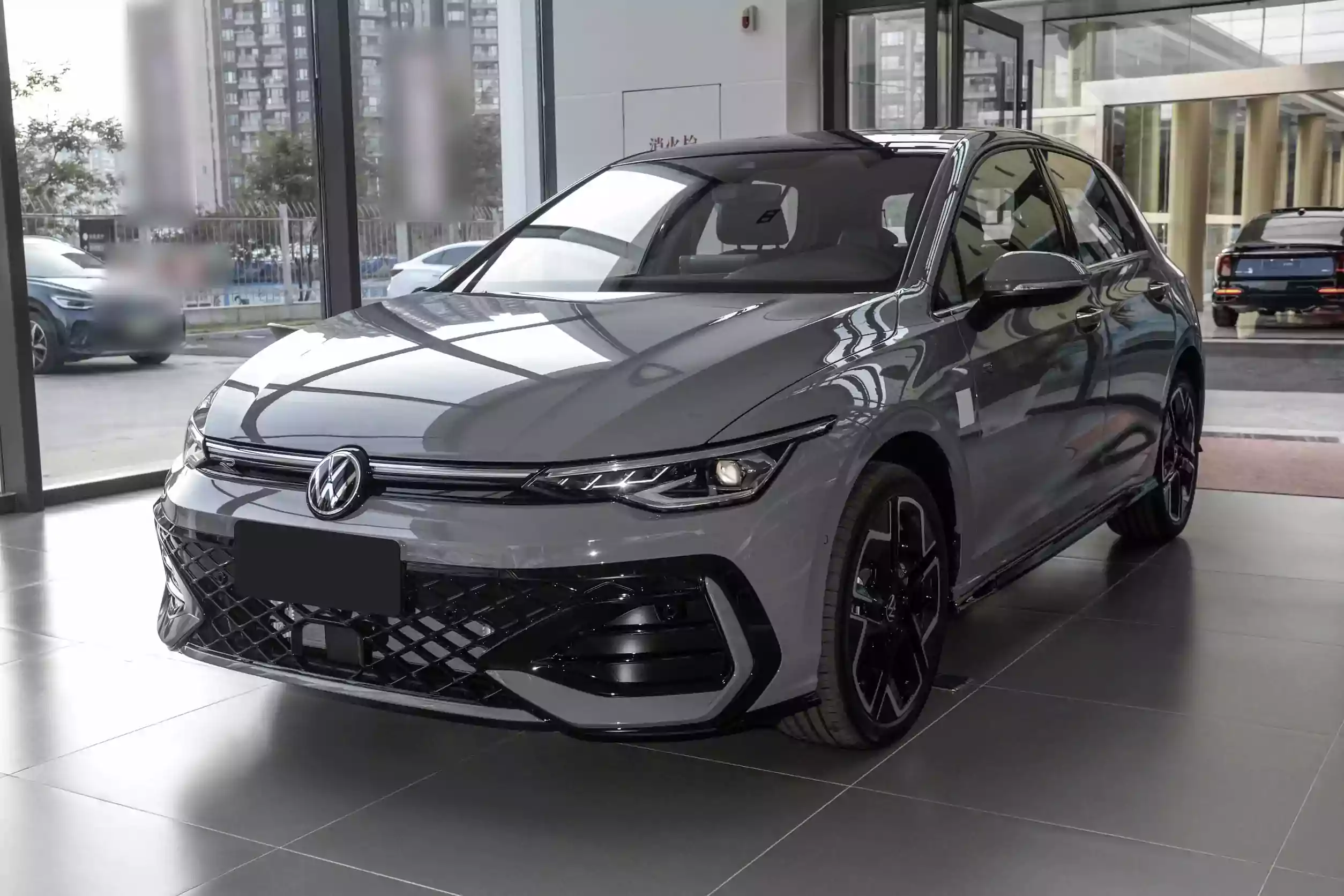
4. Volkswagen Golf
The Volkswagen Golf has long been a favorite hatchback for its nimble handling, fuel efficiency, and refined cabin. However, when it comes to rural or off-pavement use, the Golf faces several challenges that limit its practicality.
Like many compact cars, the Golf has low ground clearance — typically around 5.9 inches — which is inadequate for clearing common rural obstacles such as rocks, deep potholes, and muddy ruts. Taking a Golf on unpaved roads is often a guaranteed recipe for scraping, undercarriage damage, and uncomfortable driving.
The suspension of the Golf is tuned primarily for smooth, paved roads and sporty responsiveness rather than rough terrain absorption. As a result, driving on dirt roads can quickly become an unpleasant experience, with the car rattling, bouncing, and sometimes bottoming out on uneven surfaces.
Tires designed for fuel economy and grip on asphalt are ill-suited for loose gravel or mud, increasing the risk of slips and making it difficult to maintain control in adverse conditions. This limits the Golf’s utility for rural residents who regularly face less-than-ideal road conditions.
Additionally, the Golf’s compact size means limited cargo space and towing capacity, making it less useful for hauling supplies or equipment, key needs in rural life. Its sleek, low-profile design prioritizes style and urban convenience over ruggedness.
Furthermore, parts and services might be harder to find or more expensive in rural areas where specialized European vehicle expertise is less common. For these reasons, while the Golf is an excellent city and highway car, it does not hold up well when tasked with the demands of rural driving.

5. Nissan Leaf
The Nissan Leaf was one of the first mass-market electric vehicles to gain widespread popularity. However, like many electric cars designed primarily for urban commuting, it struggles significantly in rural environments. One of the biggest drawbacks is its limited driving range — generally between 150 and 226 miles, depending on the model and conditions.
In rural areas, where gas stations and charging stations are sparse and miles between stops are often long, this limited range can lead to “range anxiety” and practical challenges, especially when unexpected detours or rough terrain increase energy consumption.
Another major issue for the Leaf is its low ground clearance, typically around 6 inches, which is inadequate for gravel roads, dirt trails, or snowy conditions often found in the countryside. Its suspension and tires are optimized for smooth city streets, making rural roads an uncomfortable and potentially damaging environment.
The Leaf’s battery pack and electric drivetrain components are also vulnerable to impact or debris damage, which can be expensive to repair and difficult to manage in remote areas without specialized support.
Charging infrastructure is the final nail in the coffin for rural Leaf owners. While urban and suburban areas may have an abundance of public chargers, many rural communities have limited or no access to reliable electric vehicle charging stations. Home charging requires a dependable electrical system, which isn’t always a given in remote locations prone to power outages or outdated wiring.
All these factors combined mean that while the Nissan Leaf is a great eco-friendly option for city dwellers, it struggles to meet the practical, rugged demands of rural driving and living.
Also Read: 5 Cars That Sell Fast on Facebook Marketplace and 5 That Stay Listed for Months
Navigating the challenges of rural driving requires more than a vehicle that simply looks capable on paper. It demands a machine built with the strength, durability, and practical features to handle rough roads, unpredictable weather, and long distances from services.
As this article has shown, the vehicles that thrive in rural America tend to be those designed with work and endurance in mind—trucks and SUVs that offer high ground clearance, robust suspensions, reliable drivetrains, and a support network for maintenance and repairs.
These vehicles have earned the trust of countless rural owners who depend on their performance day in and day out, often in harsh and unforgiving conditions.
Conversely, many vehicles that excel in urban or suburban settings fail to meet the practical needs of rural drivers. Low-clearance sedans, electric cars optimized for city commuting, and luxury SUVs with delicate electronics and low-profile tires can quickly become liabilities once the pavement ends.
Their inability to navigate rough terrain, vulnerability to damage, and lack of access to specialized support services can turn what should be a reliable ride into a source of frustration, expense, and even danger. For rural residents, choosing the wrong vehicle can mean being stranded miles from help or spending far more on repairs than anticipated.
Understanding the distinction between vehicles suited for rural use and those better left to the city is crucial for anyone who values reliability and safety off the beaten path. While new technologies and sleek designs continue to transform the automotive landscape, the fundamental demands of rural driving remain constant.
Vehicles must be tough, adaptable, and simple enough to maintain without constant visits to specialized shops. They must provide not just transportation, but peace of mind, ensuring that drivers can get where they need to go, no matter the conditions.
In the end, the choice of vehicle is more than just a matter of preference; it’s a decision that directly impacts daily life, work, and safety in rural America. The dependable trucks and SUVs highlighted here have proven their worth by standing up to the realities of dirt roads, gravel lanes, and rough terrain.
They are the tools that make rural living possible, whether hauling supplies, transporting family, or navigating long stretches of unpaved highway. Meanwhile, the vehicles that struggle off-city remind us that not every car is designed for every environment.
For those living or working in rural areas—or those planning to venture beyond city limits—it pays to invest in a vehicle built to last. The right choice will save time, money, and stress, offering reliability and performance when it matters most.
As this article underscores, dependable rural vehicles are about more than horsepower or luxury; they’re about resilience, practicality, and the ability to keep going no matter what the road throws at them. Choosing wisely means embracing a vehicle that’s truly up to the challenge of rural America.

